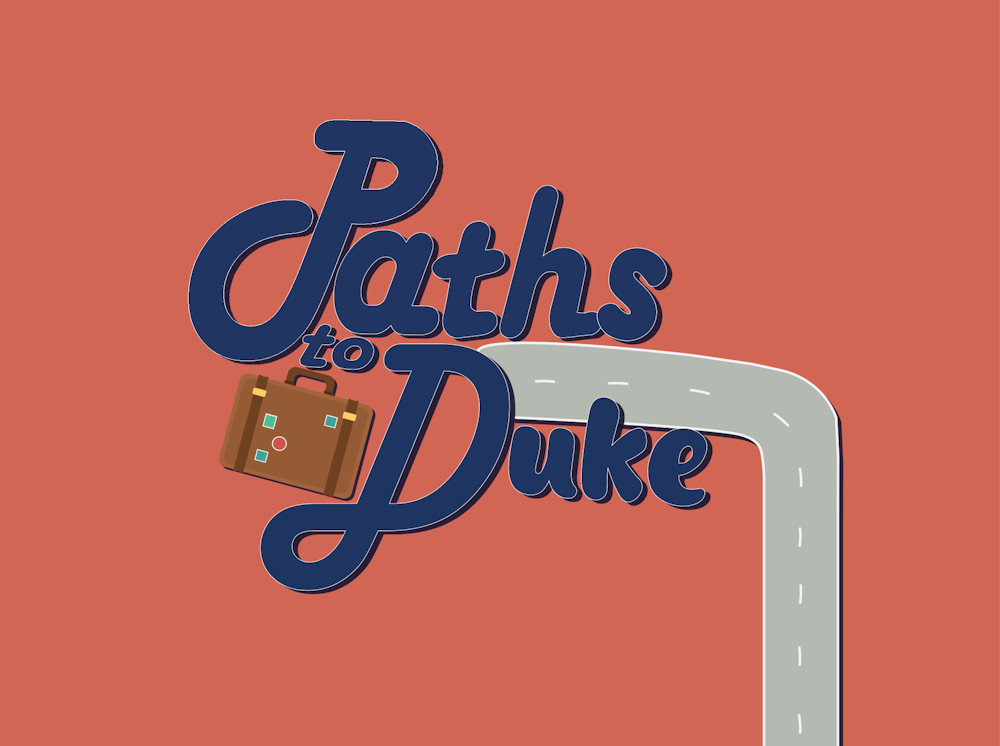Editor's note: This story is part of a series about the Class of 2027 based on a survey conducted by The Chronicle. You can read more about our methodology and limitations here, or read all of our survey coverage here.
How did the Class of 2027 get to Duke?
For the seventh consecutive year, The Chronicle surveyed the first-year class about their legacy status, family income, whether they applied early decision and more. From the 280 students who completed the entire survey and the 100 additional students who answered at least one question, we found that the Class of 2027 followed diverse paths to Duke.
Duke typically admits approximately half of its incoming class through the Early Decision process. Of our respondents, 56% applied early decision, and 63% said that Duke was their first choice.
Less than 3% of students had taken a gap year, with those students having been admitted to the Class of 2026 or earlier. 3% of respondents had taken gap years in the Class of 2026 and 11% in the Class of 2025.
More than 17% of respondents had a parent or sibling who attended Duke. Additionally, respondents indicated that they chose Duke mainly for academics and interdisciplinary curriculum, student life, culture and atmosphere.
Approximately 36% of respondents hired an admissions counselor. Only 2.5% of students from families with household incomes between $40,000 to $80,000 per year hired a college admissions counselor.
Students from families with higher incomes were more likely to have hired a college admissions counselor.
In recent years, Duke has worked to expand financial aid and accessibility. The Karsh Office of Undergraduate Financial Support maintains its claim that Duke meets 100% of demonstrated need for undergraduates. Duke also announced in June 2023, after the Class of 2027’s application cycle, that it would provide full tuition grants for eligible students from North Carolina and South Carolina with family incomes below $150,000. We analyzed how income may have affected students’ decisions to apply early decision, test-optional and more.
Students from families with higher incomes were more likely to apply early decision.
In our sample, students from families with annual incomes between $40,000 and $750,000 were substantially less likely to apply early decision compared to students with family incomes of less than $40,000 or more than $750,000. Legacy status was also positively correlated with the decision to apply ED.
Students with parents or siblings who attend(ed) Duke were substantially more likely to have applied early decision.
Almost 13% of students in our sample were first-generation, with 40% of students with family incomes of less than $40,000 identifying as first-generation. 45% of students with family incomes between $40,000 to $80,000 per year identified as first-generation, and about 6.5% of students with household incomes greater than $125,000 identified as first-generation. No students from families with household incomes greater than $750,000 identified as first-generation.
First-generation students were more likely to belong to lower-income categories than non-first-generation students.
Additionally, our survey found that first-generation students are more than twice as likely to be on financial aid.
Test optional
The 2022-2023 application cycle in which the Class of 2027 was admitted was Duke’s third consecutive cycle of test-optional admissions. From our sample, 19% of respondents applied test-optional.
Students in lower-income categories were more likely to have applied test-optional, with about 35% of students in the three lowest family income categories applying test-optional, compared to almost 8% of students in the family income category of between $750,000 and $1,500,000 per year. In our sample, students from families making between $40,000 and $80,000 per year or between $125,000 and $250,000 per year were most likely to have submitted an SAT score, an ACT score or both.
Students in lower family income categories were more likely to have applied test-optional.
Survey respondents who applied to Duke test-optional found the transition to college more challenging than those who did not. Over 60% of respondents who applied test-optional found college courses to be “slightly” or “significantly” more difficult than high school courses, compared to 57% of respondents who submitted test scores. Students who submitted SAT and/or ACT scores were most likely to report no change in course difficulty.
Students who applied test-optional were more likely to find college courses more challenging than high school ones.
The type of secondary school had little effect on whether the Duke student submitted test scores. About 18% of students who attended private non-denominational schools and 16% who attended private religious schools applied test-optional, compared to 20% of those who attended public non-charter schools and 22% of those who attended public charter schools.
The type of secondary school students attended had little correlation with whether they applied test-optional.
Other demographic information
Survey respondents tended to hail from the New York City metropolitan area, southern California, the Washington metropolitan area, the Research Triangle, Chicago, Atlanta and South Florida.
Most students in all income groups came from suburban communities. Rural students were the largest share of respondents who reported a family income of below $40,000.
Across all income categories, most students hailed from suburban communities.
The Family Educational Rights and Privacy Act permits students to review their admissions files. About 16% of survey respondents had already viewed their files, and of those who had not, about 78% said they planned on viewing their admissions files.
Approximately 16% of students have viewed their admissions files. The vast majority of students plan to view their admissions files.
Get The Chronicle straight to your inbox
Signup for our weekly newsletter. Cancel at any time.
Mia Penner is a Trinity sophomore and an editor-at-large of The Chronicle's 119th volume.

